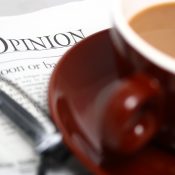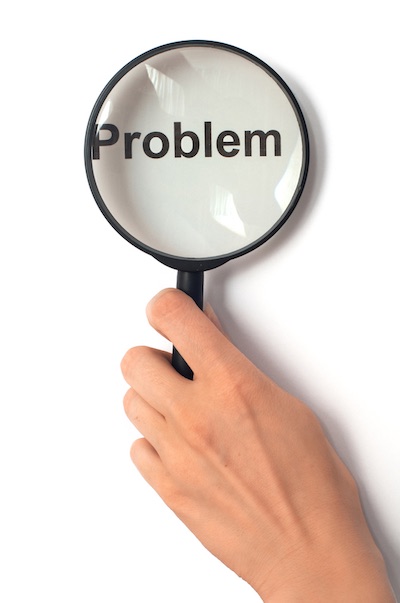For purposes of inherent anticipation, recognition is not required within the prior art itself and need not antedate the patent at issue or have contemporaneous recognition by a POSA.
 Monsanto Tech. LLC v. E.I. DuPont De Nemours & Co., No. 2017-1032, 2018 U.S. App. LEXIS 258 (Fed. Cir. Jan. 5, 2018) (Before Dyk, Reyna, and Wallach, J.) (Opinion for the court, Wallach, J.).
Monsanto Tech. LLC v. E.I. DuPont De Nemours & Co., No. 2017-1032, 2018 U.S. App. LEXIS 258 (Fed. Cir. Jan. 5, 2018) (Before Dyk, Reyna, and Wallach, J.) (Opinion for the court, Wallach, J.).
The Federal Circuit affirmed the rejection of several claims in a patent owned by Monsanto. The patent is directed to a two-step process for crossing two parent soybean lines to produce soybean seeds with a modified fatty acid profile. The Board affirmed the examiner’s rejection, during inter partes reexamination, that the claims are anticipated by, or obvious over, a prior art patent to Booth.
Claim 1 of Monsanto’s patent discloses two steps. Step (a) recites crossing a first parent line having “about 3% or less” seed oil linolenic acid content with a second parent line having a transgene that decreases the expression of the FAD2-1 gene such that it has a seed oil oleic acid content greater than about 55%. Step (b) requires “obtaining a progeny plant” having a seed oil fatty acid composition including “about 3% or less” linolenic acid and 55% to 90% oleic acid. The term “progeny” is used throughout the specification to refer broadly to any generation of progeny plants and not, for example, a first generation.
Booth discloses several soybean crosses aimed at obtaining progeny with a desired fatty acid composition. In one example Booth crossed one soybean line (having a D3A gene for low linolenic acid content) with another soybean line (having a D2T gene for high oleic acid content). During inter partes reexamination, DuPont submitted two declarations from a named Booth’s co-inventor, Dr. Kinney. The Kinney Declarations provided data from additional progeny produced by following the disclosed example, “including plants not selected for inclusion in Table 12 of the Booth patent.” The Board relied on the Declarations to interpret the fatty acid properties of a particular progeny generation, the F2:3 generation. It found that Kinney’s results “represent[ed] the lines of all resulting progeny’ from a cross prepared according to” the Booth example and Table 12, even though the pertinent results were not included in Booth’s Table 12.
On appeal to the Court, Monsanto argued that the Board erred by (1) misconstruing the term “about 3% or less”; (2) improperly relying on the Kinney Declarations as prior art; and (3) “employing a legally erroneous ‘accidental obviousness theory for claim 2.’”
Regarding claim construction, the Court found that the Board reasonably interpreted Booth’s parent line containing 4% linolenic acid to be within “about 3%,” as recited in Claim 1 step (a). The specification provides examples “‘to demonstrate preferred embodiments of the invention,’” and one example described a “Wilcox” parent line, which in the corresponding Wilcox article has a linolenic acid content of 2.3% to 4.1%. Accordingly, a POSA “would reasonably consider ‘about 3%’ to encompass a range that includes 4%.”
Turning to the anticipation, the Court found that Booth discloses step(a) in view of the claim construction of “about 3%” and the Kinney Declarations, which show that . . . “ the progeny of plants obtained’ from step (a) ‘as taught by Example 8 of Booth necessarily includes’ plants disclosed in step (b).” First, step (b) does not limit a progeny to a first generation plant. Second, while “Table 12 does not explicitly identify a progeny with the “characteristics required by step (b), “Booth expressly states that multiple generations of plants . . . were obtained from the cross.” (emphasis in original). Indeed, “Booth ‘clearly informs a [POSA] that Table 12 does not represent the full scope of the progeny lines resulting from the cross, but only represents the ‘single plants and family means that were both lowest in linolenic acid content and highest in oleic acid content.’” (internal punctuation omitted).
The Court concluded that “[i]nherent anticipation applies here because the ‘Booth disclosures . . . must necessarily include the unstated limitation.’” (emphasis in original) (internal punctuation omitted). Specifically, the Kinney Declarations “confirm that Booth’s F2:3 generation would necessarily result in progeny within the scope of [C]laim 1.”
Monsanto’s contention that the Kinney Declarations constitute “non-prior art data” and “secret data” was rejected. The Declarations were appropriate extrinsic evidence to support what is ‘necessarily present’ in a prior art’s teaching,” i.e. Booth. Further, the Declarations “are not improper ‘secret data’ simply because they were not published.” Reliance on relevant extrinsic evidence is proper in an inherency analysis. Monsanto also failed to present an argument or evidence suggesting that the data provided by Dr. Kinney does not fairly represent actual test results from the cross in question and thus Monsanto waived that argument on appeal.
Turning finally to the obviousness of Claim 2 in view of Booth, the Court again affirmed the Board’s decision. Dependent Claim 2 limits Claim 1’s step (b) progeny plant to one having specific percentage ranges of linolenic, oleic, and seed oil fatty acid levels. The Court found that substantial evidence supports the Board’s determination that a POSA would have been motivated to combine elements of Booth as a POSA “would have been motivated to modify Booth to produce plants having more variable seed oil fatty acid characteristics, as found in [Claim 2], because Booth ‘only represent the single plants and family means that were both lowest in linolenic acid content and highest in oleic acid content.’” (internal quotation marks and punctuation omitted).
Extrinsic evidence is permissible to interpret an allegedly anticipating references and to shed light on what it would have meant to a POSA. For purposes of inherent anticipation, recognition is not required within the prior art itself and need not antedate the patent at issue or have contemporaneous recognition by a POSA.
[Troutman-Ad]
[Troutman-About]

![[IPWatchdog Logo]](https://ipwatchdog.com/wp-content/themes/IPWatchdog%20-%202023/assets/images/temp/logo-small@2x.png)


![[Advertisement]](https://ipwatchdog.com/wp-content/uploads/2024/05/LexisNexis-May-16-2024-sidebar-700x500-1.jpg)
![[Advertisement]](https://ipwatchdog.com/wp-content/uploads/2024/04/Patent-Litigation-Masters-2024-sidebar-last-chance-700x500-1.jpg)
![[Advertisement]](https://ipwatchdog.com/wp-content/uploads/2024/05/Patent-Portfolio-Management-2024-sidebar-super-early-bird-with-button-700x500-1.jpg)
![[Advertisement]](https://ipwatchdog.com/wp-content/uploads/2024/05/Artificial-Intelligence-2024-Getting-AI-Patents-Allowed-sidebar-700x500-1.jpeg)

![[Advertisement]](https://ipwatchdog.com/wp-content/uploads/2021/12/WEBINAR-336-x-280-px.png)
![[Advertisement]](https://ipwatchdog.com/wp-content/uploads/2021/12/2021-Patent-Practice-on-Demand-recorded-Feb-2021-336-x-280.jpg)
![[Advertisement]](https://ipwatchdog.com/wp-content/uploads/2021/12/Ad-4-The-Invent-Patent-System™.png)







Join the Discussion
2 comments so far.
Mike Stephens
January 15, 2018 01:44 pmWhat WAS obvious is always easier for a defendant to fight as they can often come up with an expert who has trouble imagining what they thought was obvious at the time of the invention. For example, today many scientists would think that in late 1980’s it was obvious to engineer corn plants to make them resistant to insects by inserting Bt genes. However, in early 1989 no-one could engineer corn plants with GM technology to make a viable plant. My experience was that defendants then used experts to try to pursued jury’s that this was possible and hence the inventions were obvious. It is usual that it’s a battle to convince the jury or judge who’s expert is more believable; with both sides trying to impeach the other sides witnesses to negate their testimony. In the case I mention above the defendants lost. It appears in the case mentioned in this article the same defendants won. So much about defending patents is not about the simple facts but how it is argued – hence the value of good legal representation.
Anon
January 12, 2018 10:41 amWhile I recognize that this is just a nit, but is anyone else irritated by the extensive use of the acronym “POSA?”
The legal term is PHOSITA.
The case uses the proper term – see section IV. A.:
“A patent claim is invalid as obvious “if the differences between the subject matter sought to be patented and the prior art are such that the subject matter as a whole would have been obvious at the time the invention was made to a [PHOSITA].” 35 U.S.C. § 103(a) (2006).”